From the moment the first frames of SEATTLE ROAD appear on screen and the somber strains of violins play, thoughts of Terrence Malick immediately come to mind. But SEATTLE ROAD doesn’t come from Malick. No, it comes from Ryan David, a gifted young writer/director embarking on his first narrative feature. A filmmaker who embraces the filmmaking styles of auteurs of the 60’s and 70’s like Truffaut, Bergman, Rainier Werner Fassbinder, Soviet filmmaker Andrei Tarkovsky and, particularly, Nicholas Ray, the influences of these men are evident in every element of David’s rather stylized work, starting with the story.
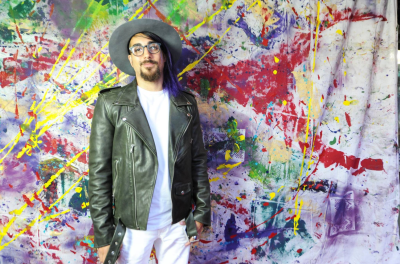
Starring Maximillian Roeg and Julia Voth, with a notable turn by Kelly Lynch, SEATTLE ROAD is the story of a young couple, Adam and Eve, who run away together to pursue their “art” – for Eve it’s her writing, for Adam it’s his painting – and a self-perceived “idyllic” life together.
Stemming from the death of Eve’s father and her omission from his apparently sizeable estate, Eve is on less than solid emotional footing. She wants to connect with her father, even in death, especially after they were somewhat estranged in life. Heading to her childhood home located on Seattle Road, Adam goes along for the ride thanks to Eve’s lies about the true ownership and status of the house in which they take up a somewhat “squatting” residence. Lustful passion and love drive the couple forward, but individual ambition appears to stymie their attempts at artistic productivity and emotional stability. As drugs come into play, the relationship takes a downward spiral, preying on their innermost fears, jealousies and insecurities before coming full circle into an explosive showdown when truths about Eve are revealed, putting the relationship to its ultimate test.
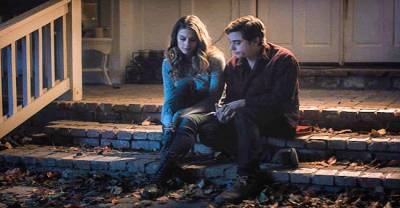
Non-linear in its structure, in speaking with Ryan David for this exclusive interview, I discovered that the story began for him thanks to his fascination with “memory, time and perception.” “I’ve always been really interested in how those things come together.” At the time he embarked on the journey of SEATTLE ROAD, himself aged 30, in a relationship with a screenwriter and also reading the book “Just Kids” by Patty Smith, “there was all these great convergences of personal experience, reading this book, seeing other relationships. . .It was a growing period. When you’re in your late 20’s and getting ready to let go of your childhood and having to become an adult but you don’t really want to, it’s like you have a cocoon and now you have to figure out this stuff. You’re not in high school anymore with the love of everyday just hanging out together. It can’t be like that. It’s navigating all of these things when both people are going through huge changes. Both people are caterpillars who are going to be butterflies, but they’re going through that together.”
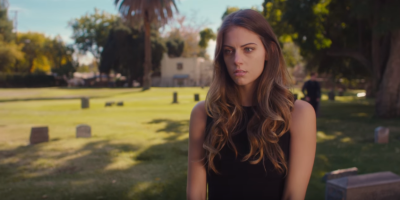
With the story in place, something that David keenly develops is not only the rawness of the story and the characters, but the cinematic polish which, on combining the elements, creates a stunning dichotomy lending to an uncomfortable yet intimate exploration of emotionally complementing contrasts for the audience. To achieve this, David had a two-fold approach. The first was in telling both sides of the story, Eve’s and Adam’s. “I didn’t want it to be just her side or his side. She was the talker and he was the visual person. So first it was, how do I weave this story together where it’s her voice telling her side of the story and his art montages, which are in his head, and are how he is creating his side of the story. The juxtaposition of him and her, and showing both sides of the same coin. . .it’s keeping those two things together.” The second prong was color correction. “I spent a lot of time on color correction. I didn’t just do one color palette. I basically, scene by scene, went through the film and would look at old photographs of the Hudson River Valley Group from the 1800’s, and we did a lot of different color changes so that as the movie went on, we colored it differently. . .I used the color and the coloring at different times to help tell the story as to where you were, especially because the movie is not in linear order.” To keep the audience emotionally “locked in” to the story, “the best I could do was color in different ways so you can understand the emotional part. At the end of the day, it’s about how you make someone feel something. They’re gonna think about things, they’re gonna analyze it, they’re gonna say this or that, but it’s how you make someone feel. To me that was really important.”
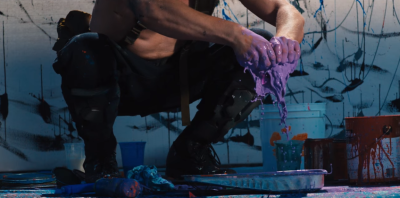
When talking about the emotional connection of not just SEATTLE ROAD, but any story, David is quick to mention one of his all-time favorite directors, Nicholas Ray. “What always struck me about him was his sensitivity and his vulnerability in sentimental situations. I really wanted to try to capture that the best that I could, experimenting and not closing the door on anything by saying we can’t do this because it breaks this rule or this isn’t the ‘right way’ to do it. I took the handcuffs off everybody.”
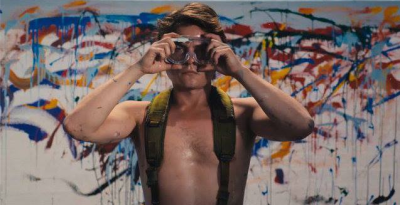
Creating the cinematic sensibility of SEATTLE ROAD led David to cinematographer Sandra Valde Hansen. Already demonstrating her skill at lighting and lensing and developing a palette in earlier films like “Kaboom!” and the exquisite “White Bird In A Blizzard”, David calls Hansen “amazing” as she now brings a Malick-esque visual tone and texture to SEATTLE ROAD. Looking to Andrei Tarkovsky for visual influence, David is quick to note that Hansen has “an amazing sensibility” and was quickly on board with his vision, in large part due to his “storyboard[ing] everything” thus enabling them to be “perfectly in sync.”

Expounding on the film’s visual grammar, there is a visual and auditory texture that goes hand-in-hand with use of color, beauteous montages of ink bleeds into water with a slo-motion visual effect, then layered with a voice-over narrative and distinctive scoring by Dhani Harrison and Paul Hicks. Bringing this visual grammar into his aesthetic was important to David.
A fan of independent film, it has been his observation for a number of years now that independent films have “become part of the machine. They are kind of like wolves in sheep’s clothing. . .They have the same script story beat that the Hollywood blockbusters do; page 5 this happens, page 10 this happens. Independent cinema, to me, is in its own way a conveyor belt. The movies are perfectly designed to go to Sundance, they’re perfectly designed to go to SXSW and, they’re perfectly designed to be sold. But then you have my thing – SEATTLE ROAD.”
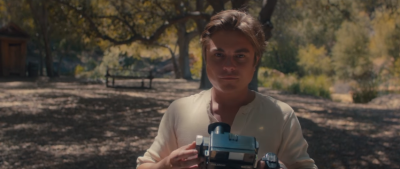
“At first it’s a little challenging because the film grammar I’m using is so different than what people are used to, that they don’t know how to take it at first. Sometimes it takes other people to look at it who understand film grammar to help us get it out there and get the word out. . .I was at NYU during the last little bit when they were still teaching film. I had to sit there and cut frame by frame, splice by splice. With the advent of digital, everything has just become, ‘Oh, show up with your friends, shoot a bunch of people talking and we’ll figure it out later.’ Nobody sits down and thinks. The tools that are given to us are great, but for me it’s finding the perfect balance of the old and the new and merging them together.”
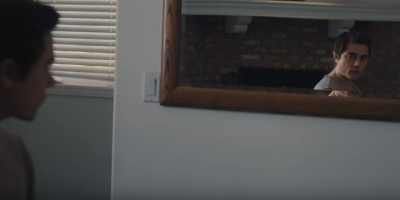
Part of the meld of old and new led David to the Arri Alexa camera “because I wanted to shoot as close to film as I could, [and] we used vintage 1970’s Panavision lenses. Nobody wanted us to use them because they were too big and bulky, but I’m like, ‘Perfect! We’ll use them!’ It was really trying to stay true to this 1960’s, 70’s homage to the great directors. . .[T]he tools and how to utilize them has really been lost in independent cinema. . .I love those movies, don’t get me wrong, but I miss people trying to push the envelope of cinematic language, or at least trying to. I hope that with my films, I can inspire people to get back in there and try to be inspired to go recreate in their own way.” Just because a film is “indie” doesn’t mean it can’t be cinematic and that you can’t use the proper tools in the toolbox for the proper aesthetic.
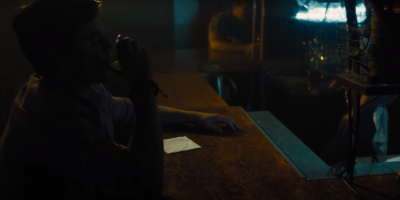
Part of that cinematic toolbox also involves editing and here, David called upon the expertise of Matt Johnston. With the opening sequence of the film, the viewer’s curiosity is piqued and the tone is set, raising interest and questions, the answers to which then unfold. Harkening to opening techniques used in early films by Akira Kurosawa, David opens the film “without any dialogue, without anything. Just the editing and the tone. The whole movie, the thesis, is set up in the opening.” Admitting this was “not a quick editing process”, David and Johnston spent some eight months editing. “It was a process of discovery. . .It isn’t like a 1-2-3 edit and then two weeks later the film is done.” Likening the role of editor to that of a screenwriter, “the editing is a lot like writing and re-writing. We rewrote and we rewrote. That’s how you get to this type of film; having the time to spend rewriting the clay that you have when you shoot. For me, so much of my movies and how I want to put things together is in the post process.”
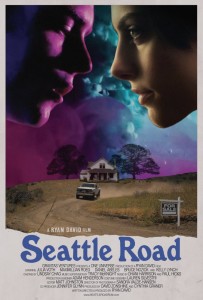
Pragmatic in his filmmaking philosophy, David believes that many filmmakers miss the mark because “a lot of people spend all their money in the actual production. . . .I think that’s misguided [thinking]. Put all the money up on the screen and then you have no money for post. At the end of the day, production is where you go get the clay. But it’s really in post where you chisel it down. . . .A lot of good films are there, but they just need to be found. Even big Hollywood features, when they have a deadline, they have to hit that deadline. There might be a great movie in there, but if they only had two cracks at the edit and they’ve got to put it out, they’re gonna get something that just isn’t as well thought out.”
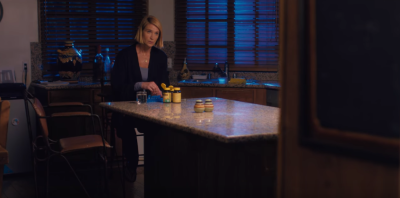
The icing on the proverbial cinematic cake comes from the score. Omnipresent throughout the film, composer Dhani Harrison together with Paul Hicks, delivers a work with varying emotional beats that capture the life unfolding on screen for Adam and Eve. Originally working with one composer in the temp scoring stages of SEATTLE ROAD, he couldn’t quite achieve the desired musical result, thus “the whole production was put on hold and we put the movie out there to see what the feedback was and if we could get a composer” with the thematic sensibilities necessary to director Ryan David. The composer who fit the bill was Harrison, wowing David with one sequence that went “really really dark with the music!” Describing Harrison and his composing partner Hicks as being “like little kids trying to please me”, it proved to be an interesting scoring process. “We only had a very short time period to do the score because we had a sound mixer who was leaving to go out of town. We essentially had two weeks to do the entire score and mix the film. It was insane.” Ironically, one of the most striking pieces of the film, visually and musically, is the opening montage which, according to David, “was the last piece of music [but] the one piece of music that wasn’t working for me. . .Finally at the 12th hour they found something that worked.” A blend of electronic music with violins recorded live, the result “was magical.” Using the same approach as with the film’s visuals, a tactile practical sensibility, “ we [used] digital and all the technology to the furthest extent, but also pulling it back and saying how do we do this, how do we make this like the 60’s, how do we make this like the 70’s.” That philosophy also extended to the film’s one-sheet. “How do we get this to look like the 60’s? How do we get this to look like the 70’s. How do we go back to the cinematic tools where there wasn’t the technology to make movies like today and you had to do things practically and with a lot more thought.”
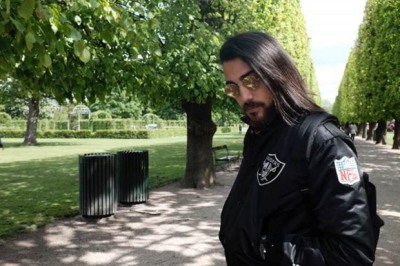
Now that Ryan David has one feature film under his belt and another in script stages, he is able to take a step back on where’s he’s been, what he’s accomplished and what he’s learned about both himself and filmmaking. “I’m not just a filmmaker. I’m a writer. I realize I consider myself more of a writer than I am a filmmaker. I write everyday. I only get to do filmmaking so much. . .I’m really a writer, but I’m not just a writer. I’m doing a lot of photography lately. I’ve started painting. I’ve started to realize I’m an artist and that I don’t have to just lock myself into this narrow conception of success and that if I don’t get into this film festival and if this doesn’t happen, it’s all over. . .Instead of looking outside of myself, I looked inside. . .My art needs to be a reflection of me. I am the art and the thing that I make is the reflection. What I’m learning now with my next project I’m working on is that specific thing. I shouldn’t put my desire, my happiness or my self-worth in the thing that I make because it’s just a reflection of me. My life is the art. What’s going on is just what’s going on. I feel like that specific piece [SEATTLE ROAD] was just where I was at 26, 27, 28. The next piece will be where I was at 29, 30, 31. My stuff will be the reflection of wherever I am as I move through my life.”
interview 6/14/2016












